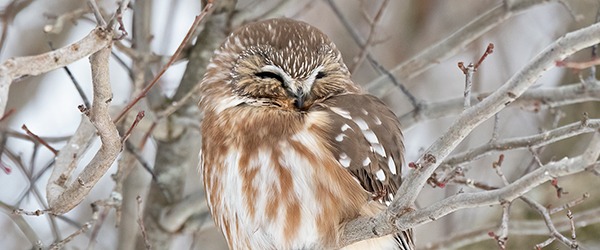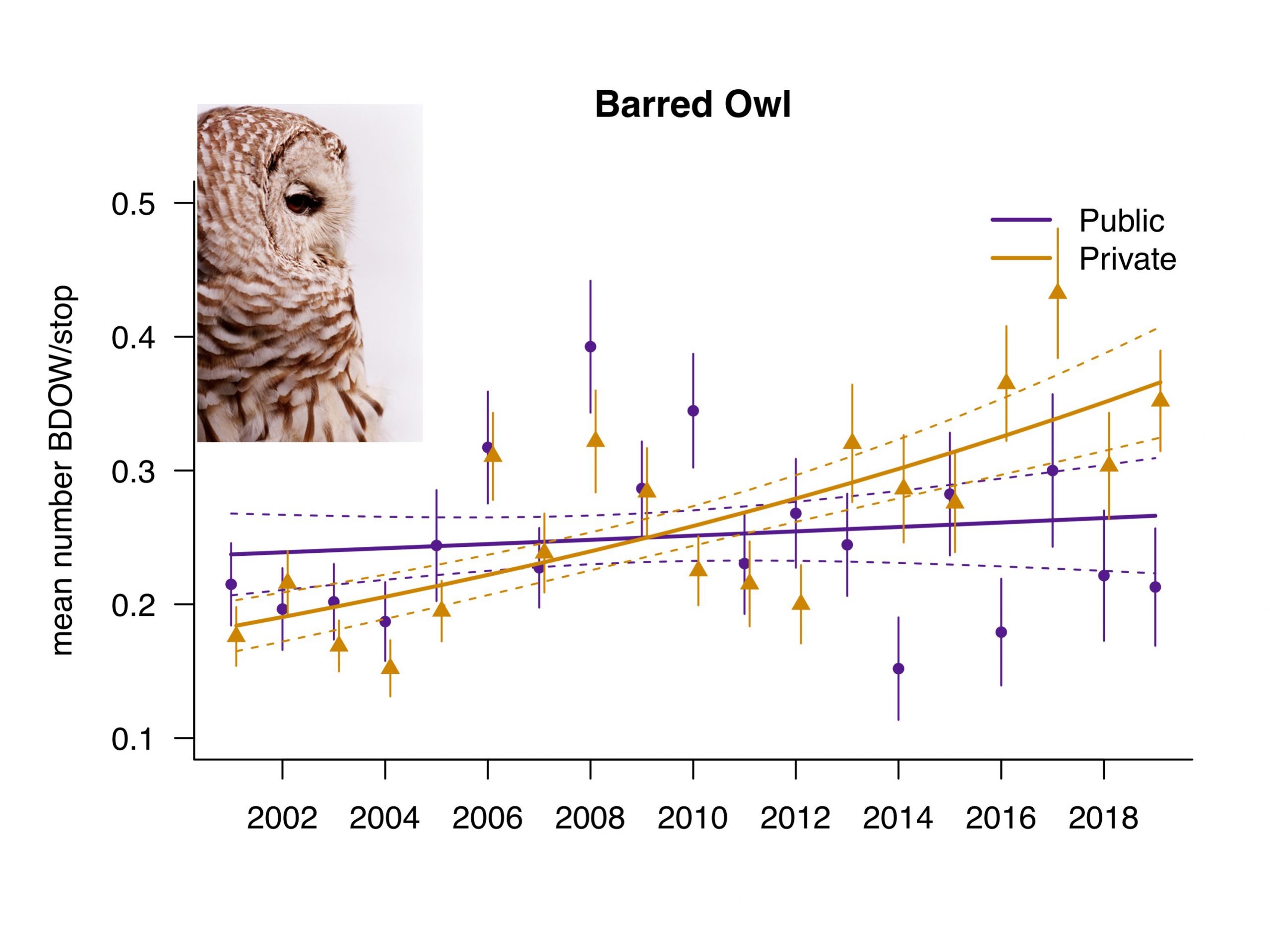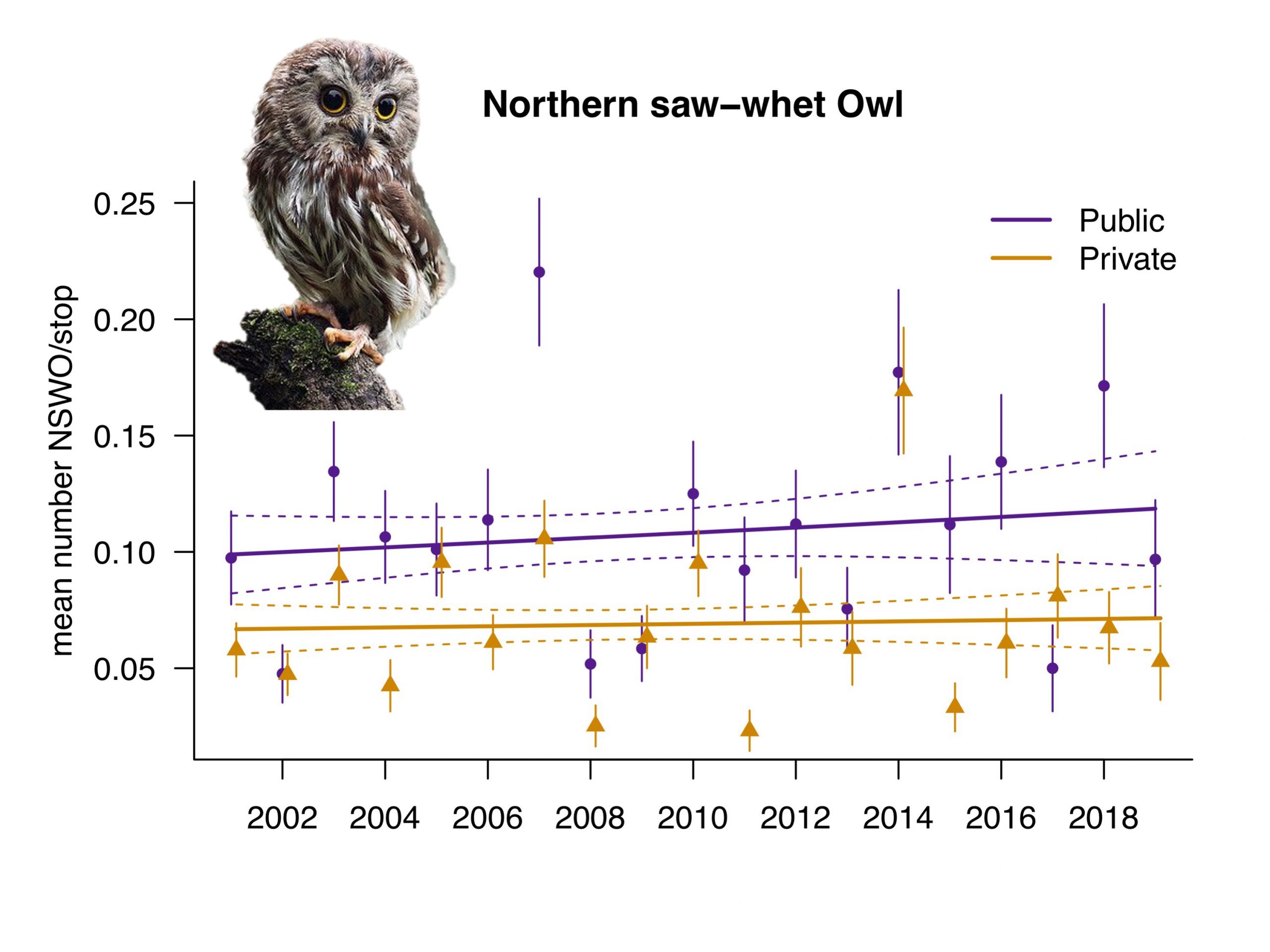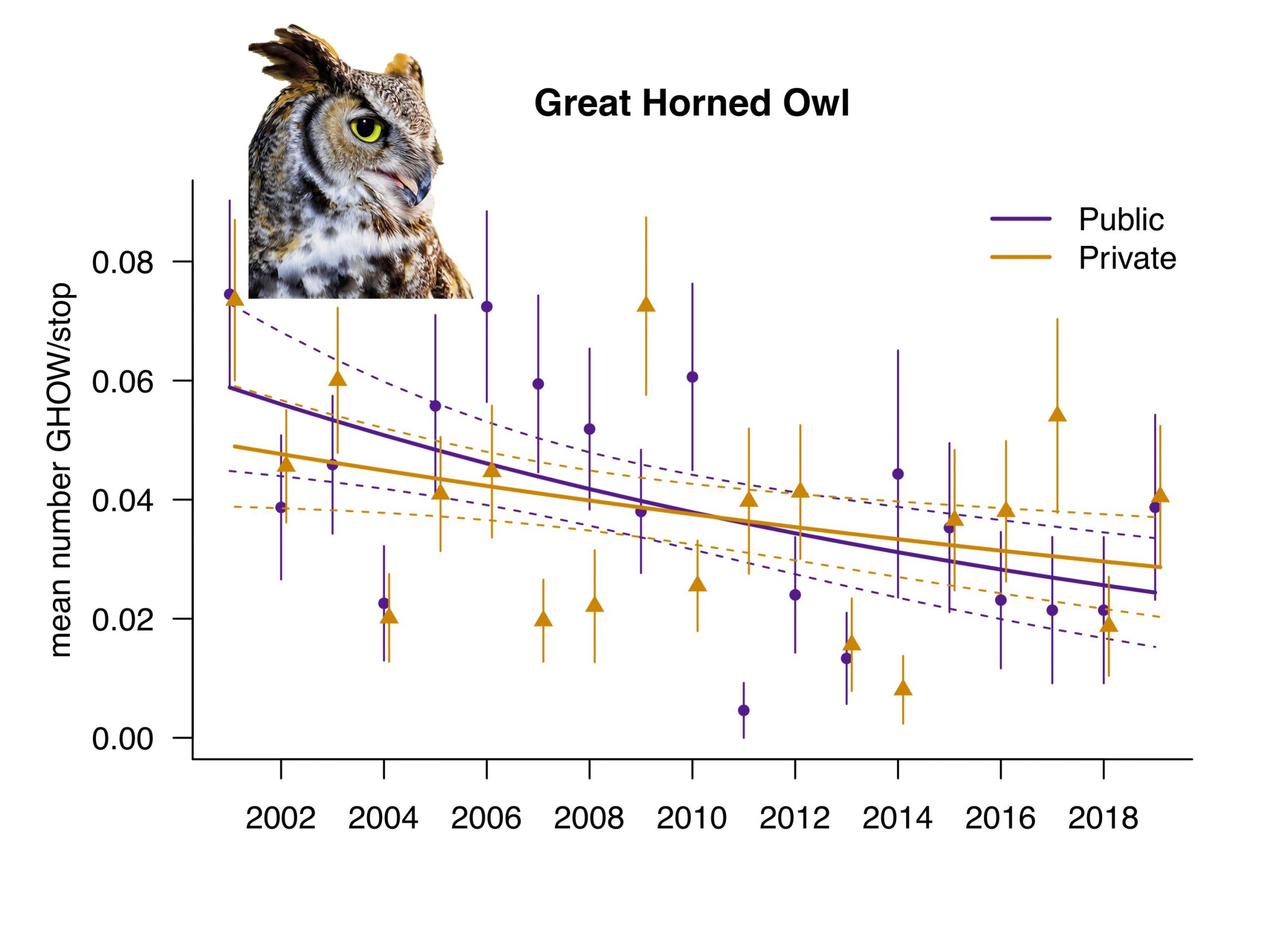By Dr. Rémi Torrenta, Bird Projects Biologist, Birds Canada
The Nocturnal Owl Survey in the Atlantic region started in 2001. Since then, tons of data have been collected about these majestic and secretive birds, thanks to the involvement and dedication of hundreds of volunteers! Our knowledge of the abundance and population trends of owl species in this region and across North America has thus been greatly improved over the past two decades.

Northern Saw-whet Owl Photo: Judith Blakeley
Our team of scientists has summarized 20 years of data in New Brunswick in a report available online (birdscanada.org/atlantic_owls). It highlights the trends for the three most common species of owls in New Brunswick, and differences in trends for private versus public lands, which have implications for forest management.
The Barred Owl, an indicator of sustainable management for the old hardwood forest habitat, has shown a significant increase in abundance for the past 20 years, particularly on private lands. This suggests that private companies or other private owners have left sufficiently large patches of forest that is mature enough to support Barred Owls in New Brunswick.

The Northern Saw-whet Owl does not show clear trends, but instead peaks in abundance occurring every two years. It is also more abundant on crown lands, where management may favour a greater variety of forest ages and vertical structures (combinations of trees and vegetation of different types and heights).

Finally, Great Horned Owls show consistent decreasing trends over the past 20 years in New Brunswick, though this varies geographically. The reasons for the decline of this species, which can live in a wide variety of habitats (open and closed), are not clearly understood.

Management practices that limit the availability of older stands may not be adequate in the long term for sustaining populations of most owl species in New Brunswick, as well as other species that depend on mature forests.
If you want to know more about the Owl Survey data, you can consult the NatureCounts database here: https://www.birdscanada.org/birdmon/atowls/
You will also have the possibility to sign up as a participant for the Owl Survey program, and see if there is a route available next to your area for next year, as the surveys (hopefully!) resume safely according to regional health guidelines. We will also keep you updated about webinars about owls towards the end of the year.
Figures: Population trends for the three main species of owls in New Brunswick, from 2001-2019, according to landbase. The dashed lines represent 95% confidence intervals. Points with error bars indicate annual variation, whereas trend lines indicate trajectory over time.
